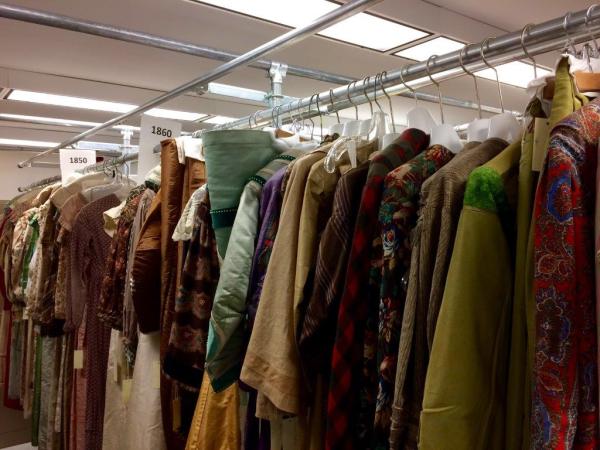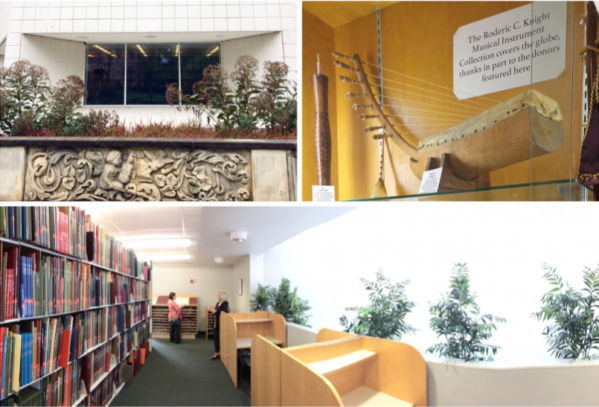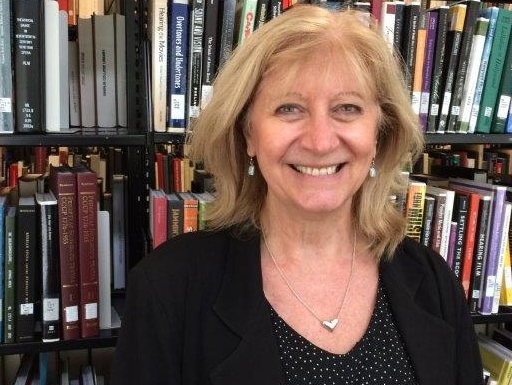this is a page for
Category: Academic Libraries
Located in Campbell Hall on The Ohio State University campus, the Historic Costume and Textiles Collection is truly a gem in the university’s crown. The collection, part of OSU’s College of Education and Human Ecology, was established by Ohio State faculty in the 1920s and has grown through donations and acquisitions into an expansive collection of nearly 12,000 items.

The collection includes an array of items, including clothing, buttons and accessories dating back to the mid-18th century and some textiles go back much further – the oldest European items dating to 1450-1510 and pre-Columbian South American to the 9th-11th century. These pieces provide a rich perspective into the evolution of culture over time. Students, faculty and visitors can study the changing fashions of men, women and children from around the world, lending insight into the culture of the times and bringing to life periods of history in a unique way.

Gayle Strege, collection curator, joined the university in 1996 and has played an instrumental role in creating digital access, improving organization and preservation, and curating engaging exhibits to highlight the importance of the collection. Gayle, whose background includes theater costuming and museum work, is passionate about textiles and fascinated with the way items are constructed. She enjoys helping students discover connections between the garment and the history of the individuals who created and wore it. The collection is frequently studied by the 20th Century Fashion History course, offered in the Fashion/Retail Studies major. Courses including Women in Modern Europe (History), Women and Gender in the US (History) and Children and Childhood in the Western World (History), Art History, Education and English Literature are a few of the other classes that access the collection to create a deeper understanding of the cultures and subjects they study. Students visit the collection in person and can access many items on the collection’s website, which provides detailed images and background information.

The collection also contains an assortment of over 25,000 buttons which were gifted to the university by former Battelle librarian Ann Rudolph. The buttons are organized on cards by a variety of characteristics, including size, shape, color and material and provide an ongoing project for the collections caretakers – photographing and cataloging them for future enthusiasts!

The Historic Costume and Textile Collection operates a gallery in Campbell Hall. The current exhibit celebrates a variety of fashionable outerwear, providing a rich “history of fashion in the shape of capes, coats, and cloaks”. Past exhibits include bridal fashion and Columbus’ fashion story. The gallery is free and open to the public and we highly recommend visiting.
The Ohio State University Historic Costume and Textile Collection is amazing and culturally important, giving audiences the opportunity to experience the technical aspects, aesthetics and social meaning of apparel and textiles.
This slideshow requires JavaScript.

This month’s feature on Oberlin College Libraries is a special traveling, two-part series. This second installment focuses particularly on Oberlin’s Conservatory Library. Please see our first part here.
The Conservatory Library at Oberlin College serves as a lively central hub for the college’s four music buildings. Students meet, collaborate and even sing throughout the library. In fact, while we toured the library, we heard a group of students working through and harmonizing on a music piece!
The library was created soon after Oberlin Conservatory of Music’s inauguration in 1865, making the conservatory the oldest continuously operating conservatory of music in the United States. The current library building was constructed in 1963 and has undergone several enhancements. In 2000, the library’s collection was considerably expanded and a second story with high density shelving was added. In 2010, the library obtained a vault for the library’s incredible special collections, and in 2015 the Conservatory Library Special Collections Reading Room was opened.

Conservatory Librarian Deborah Campana noted the library is an essential partner to the Oberlin College Conservatory of Music . The library ranks among the largest academic music libraries with approximately 270,000 items, including 80,000 sound recordings, 127,000 musical scores and almost 63,000 books about music. Specialized online databases and computers equipped with composition software expand students’ discovery and technical expertise. The library continues to actively collect in the area of women musicians as well as ethnic, folk, jazz and other genres.

The Conservatory Library’s amazing special collections, managed by Jeremy Smith, contain rare materials from the 1500s through today. The collection comprises of a wide array of recordings, music manuscripts, autographs, photographs, engravings, paintings, posters, playbills and instruments. Jeremy oversees the ongoing digitization of the collections and creates engaging exhibits throughout Oberlin College’s campus.
The Conservatory Library at Oberlin College is a vibrant, musical space and a gem within the college.

This month’s feature on Oberlin College Libraries is a special traveling, two-part series. Please join us on October 17th when we explore the libraries further, particularly the Oberlin College Conservatory Library.
Oberlin College, located in northern Ohio, celebrates a rich history of providing excellent equality in education. The college, founded in 1833, was the first college in America to adopt a policy to admit African American students and the first to grant bachelor’s degrees to women in a coeducational program. The city of Oberlin has a long history of supporting racial justice, including when the town banded together with neighboring Wellington to keep runaway slave, John Price, free. In addition to providing exceptional service to students, the Oberlin College Library helps to preserve the college’s history and educate students on the history of the institution through their amazing collections. As a result of their shared history with the city, the college maintains an impressive collection of abolitionist materials and original records.
“From it’s inception, the school represents education and social justice. The library is the steward of that concept” – Alexia Hudson-Ward.

Hudson-Ward joined Oberlin College as the Azariah Smith Root Director of Libraries in July of 2016 and oversees the college’s four libraries – the main Mudd Center library and the arts, science and conservatory libraries. The library’s founding director, Azariah Smith Root, was a visionary and thought leader behind the concept of bibliographic instruction who also held leadership roles with the American Library Association.
Hudson-Ward explained that the college’s 3,000 students have access to all of the libraries and visit them depending on which unique atmosphere suits their needs. The Mudd Center library serves as a meeting place and student union, the art library provides hands on learning opportunities, the conservatory library is musical and often students are found singing in the stacks and the science library is a silent study space.

Head of Special Collections Ed Vermue discussed the power of physical objects in the library collection. Library staff are working to increase the use of haptic learning by delivering physical objects from their archives into the hands of students. These experiences engage students in learning and often lead them to explore other materials including documents and manuscripts. Oberlin is exploring methods to capture the essence of what is lost in the digitization process and to display materials while making them part of a readily available collection.

The library has also been tasked with documenting the biography of President Marvin Krislov, who will depart the college at the end of the academic year. As the first “digital president,” the library will explore methods for capturing his presence on the campus through his social media and other digital communications.
Hudson-Ward is excited about the opportunities that lie ahead. As someone new to the campus, she enjoys seeing the greatness of the college and its libraries through fresh eyes and sharing her enthusiasm with her team, students and library visitors.



















































